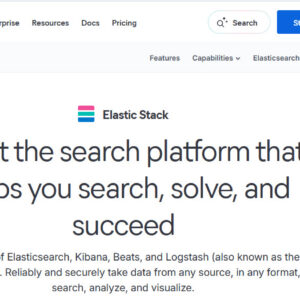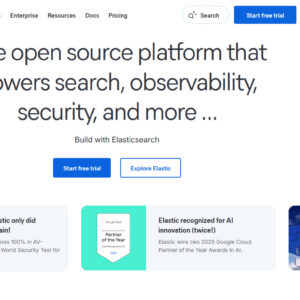
With cyberattacks targeting websites and applications daily, protecting your web apps is no longer optional—it’s essential. A WAF, or Web Application Firewall, is a powerful security tool designed specifically to safeguard web applications from malicious traffic, unauthorized access, and a wide range of threats.
In this article, you’ll learn what a WAF is, how it works, why it’s critical in cybersecurity, and which types are best for your needs.
What Is a WAF (Web Application Firewall)?
A Web Application Firewall (WAF) is a cybersecurity solution that monitors, filters, and blocks harmful HTTP and HTTPS traffic to and from a web application. Unlike traditional firewalls that focus on protecting the network layer, WAFs operate at the application layer (Layer 7) of the OSI model.
By acting as a protective barrier between users and your web server, a WAF helps detect and block common attacks such as:
- SQL Injection
- Cross-Site Scripting (XSS)
- File Inclusion Attacks
- Cross-Site Request Forgery (CSRF)
- Distributed Denial of Service (DDoS)
WAFs inspect every request and response, ensuring that malicious payloads never reach your web application.
How a WAF Works
A WAF sits between your web application and the internet. Every incoming request is analyzed before reaching the server, and every response is checked before being sent to the user.
WAFs use several detection and filtering methods:
- Rule-Based Filtering: Blocks traffic based on pre-configured rules or blacklists.
- Signature Matching: Identifies known attack patterns or malware signatures.
- Behavioral Analysis: Detects abnormal behavior like suspicious login attempts or high request volumes.
- Anomaly Detection: Flags unexpected or unusual traffic patterns.
The WAF filters this traffic in real time, automatically blocking or challenging suspicious activity to keep your app secure.
Why You Need a WAF to Protect Web Apps
Web applications are often the most exposed part of your digital infrastructure. Whether you’re running a blog, e-commerce platform, SaaS product, or company website, attackers look for vulnerabilities in your app to exploit.
Here’s how a WAF helps:
1. Blocks Common Threats Automatically
WAFs are designed to block threats listed in the OWASP Top 10, including injection attacks, XSS, and broken access control. You don’t need to manually detect these threats—your WAF does it for you.
2. Shields Against DDoS Attacks
Modern WAFs include DDoS mitigation features to stop attackers from overwhelming your site with traffic, helping maintain uptime and performance.
3. Protects Customer Data
If your app collects personal data (emails, payment info, passwords), a WAF helps prevent leaks and breaches, ensuring data compliance with GDPR, HIPAA, or PCI-DSS.
4. Boosts User Trust
A secure website performs better and earns more trust from users. WAFs reduce the risk of website defacement, hacking, or slow load times due to attacks.
5. Reduces Developer Burden
With a WAF in place, developers can focus on building features instead of constantly monitoring or patching security gaps.
Types of WAFs
There are three main types of WAFs, each offering different deployment models:
1. Cloud-Based WAF
These are hosted and managed by third-party vendors. They’re easy to deploy, highly scalable, and suitable for small to large businesses.
Pros:
- Fast setup
- No hardware required
- Automatic updates
Examples:
Cloudflare WAF, AWS WAF, Azure WAF
2. On-Premises WAF
Installed within your own infrastructure as hardware or software. Offers maximum control but requires in-house management.
Pros:
- Full customization
- Local data handling
Examples:
F5 BIG-IP, Imperva SecureSphere
3. Hybrid WAF
Combines cloud-based flexibility with on-premises control. Ideal for businesses needing redundancy and flexibility.
Pros:
- Best of both worlds
- Custom and scalable
Examples:
Akamai Kona Site Defender, Radware AppWall
Real-World Use Cases
- E-commerce Sites use WAFs to prevent credit card skimming and customer data theft.
- Banks & Financial Apps rely on WAFs to block account hijacking attempts.
- Healthcare Platforms use them to comply with HIPAA and secure patient records.
- SaaS Applications leverage WAFs to secure login portals and APIs.
Key Features to Look for in a WAF
When choosing a WAF, prioritize:
- Real-time threat detection
- DDoS protection
- Bot mitigation
- API security support
- Compliance reporting tools
- Customizable rules and dashboards
Conclusion
A Web Application Firewall (WAF) is essential for anyone running a website or web-based application in today’s threat-heavy environment. It actively monitors, filters, and blocks cyberattacks before they can exploit your app.
Whether you choose a cloud-based, on-premises, or hybrid WAF, the important thing is that you act now to protect your data, users, and brand. With the increasing frequency and sophistication of cyber threats, a WAF is not just a nice-to-have—it’s a must-have for modern web security.









